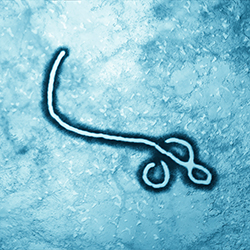 With concerns looming that hospitals could encounter a patient with Ebola virus disease, hospitals should be investigating their preparedness. Among the things that should be considered is how medical equipment used to treat patients will be decontaminated. An article from the Association for Professionals in Infection Control and Epidemiology cites the following recommendations from the U.S. Centers Disease Control and Prevention (CDC):
With concerns looming that hospitals could encounter a patient with Ebola virus disease, hospitals should be investigating their preparedness. Among the things that should be considered is how medical equipment used to treat patients will be decontaminated. An article from the Association for Professionals in Infection Control and Epidemiology cites the following recommendations from the U.S. Centers Disease Control and Prevention (CDC):
Dedicated medical equipment (preferably disposable, when possible) should be used for the provision of Ebola patient care. All non-dedicated, non-disposable medical equipment used for patient care should be cleaned and disinfected according to manufacturer's instructions and hospital policies.
When disinfecting medical devices, use hospital disinfectants that are compatible with the equipment being serviced and that are registered with the U.S. Environmental Protection Agency (EPA) or a comparable international organization. On its Interim Guidance for Environmental Infection Control in Hospitals for Ebola Virus page, CDC states:
Although there are no products with specific label claims against the Ebola virus, enveloped viruses such as Ebola are susceptible to a broad range of hospital disinfectants used to disinfect hard, non-porous surfaces. In contrast, non-enveloped viruses are more resistant to disinfectants. As a precaution, selection of disinfectant product with a higher potency than what is normally required for an enveloped virus is being recommended at this time. EPA-registered hospital disinfectants with label claims against non-enveloped viruses (e.g., norovirus, rotavirus, adenovirus, poliovirus) are broadly antiviral and capable of inactivating both enveloped and non-enveloped viruses.
Contact device manufacturers for recommendations on cleaning and disinfecting the exterior and potentially contaminated interior components of their equipment. ECRI Institute recommends that EPA-registered disinfectants be used if possible. Contact the manufacturer for recommendations and possible incompatibilities. If the manufacturer cannot offer specific recommendations, consider using detergent and water to remove visible contamination, and disinfect or sterilize using a method unlikely to cause damage.